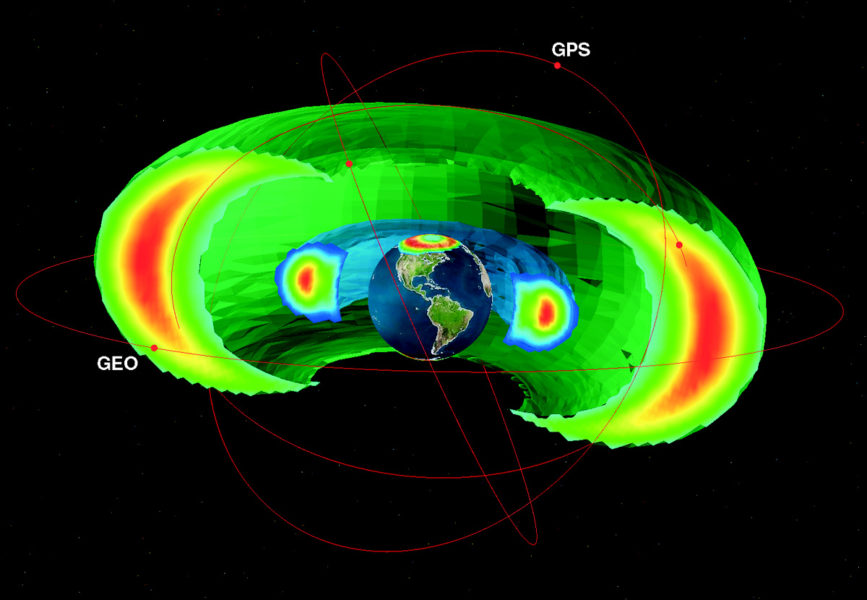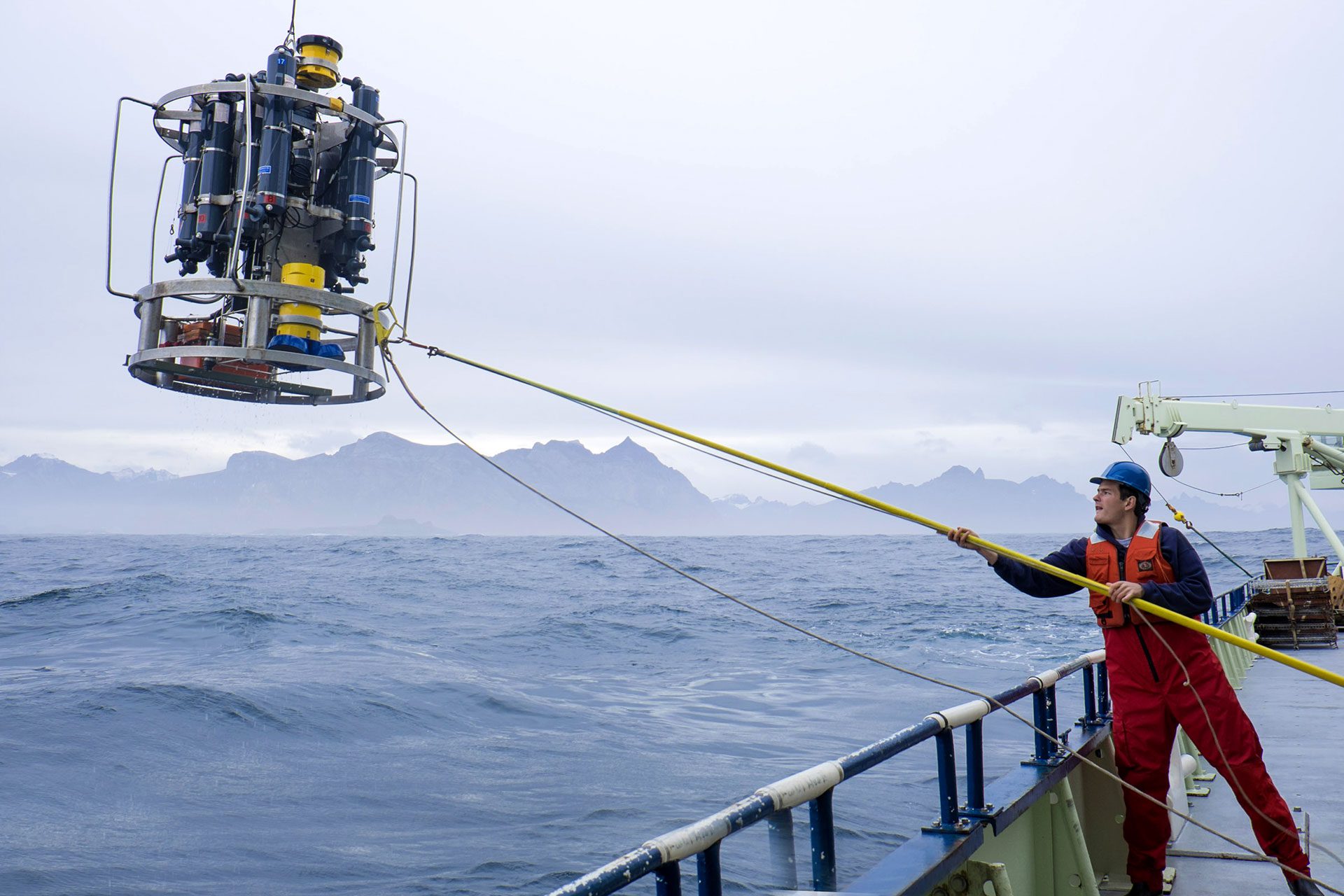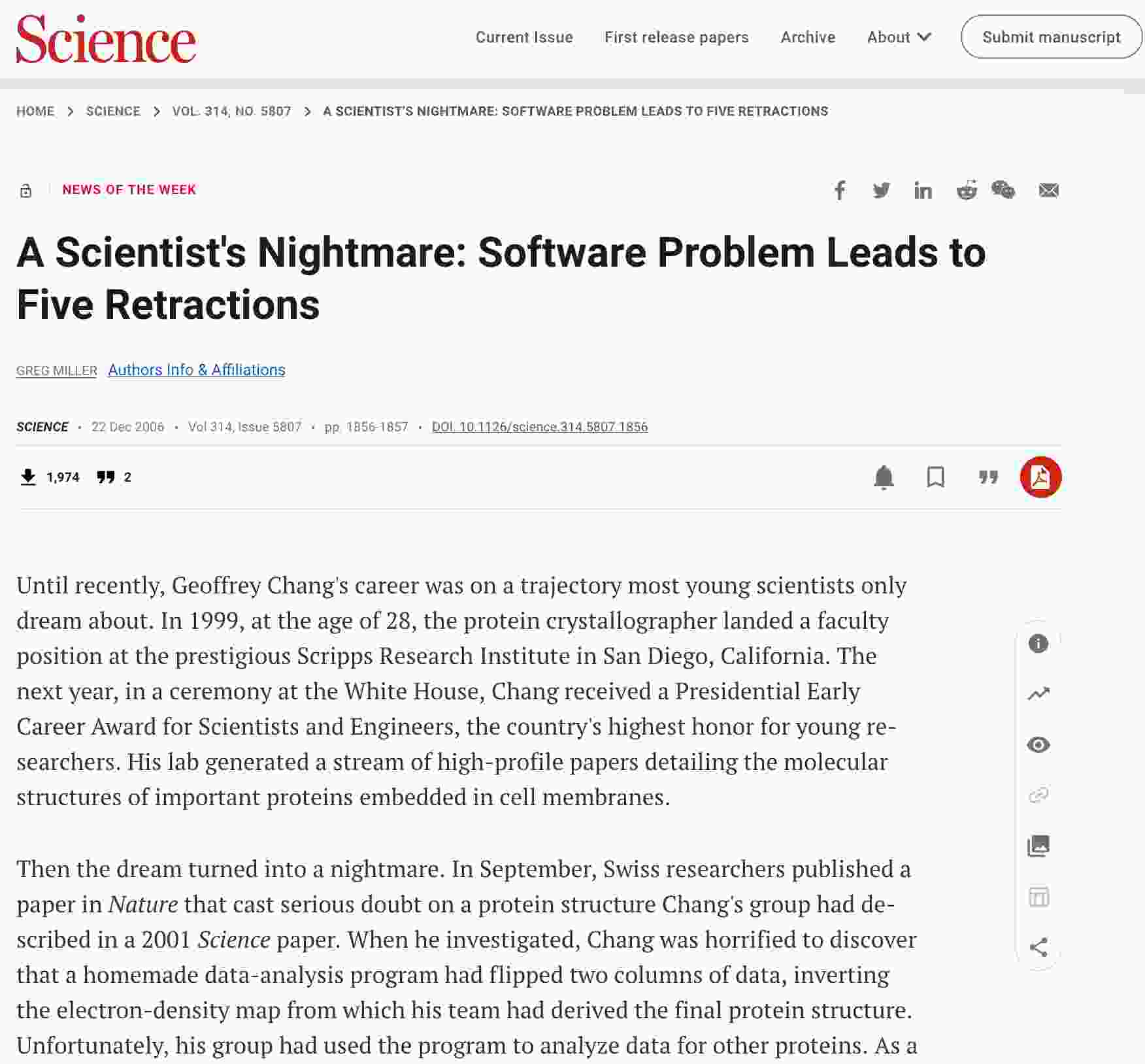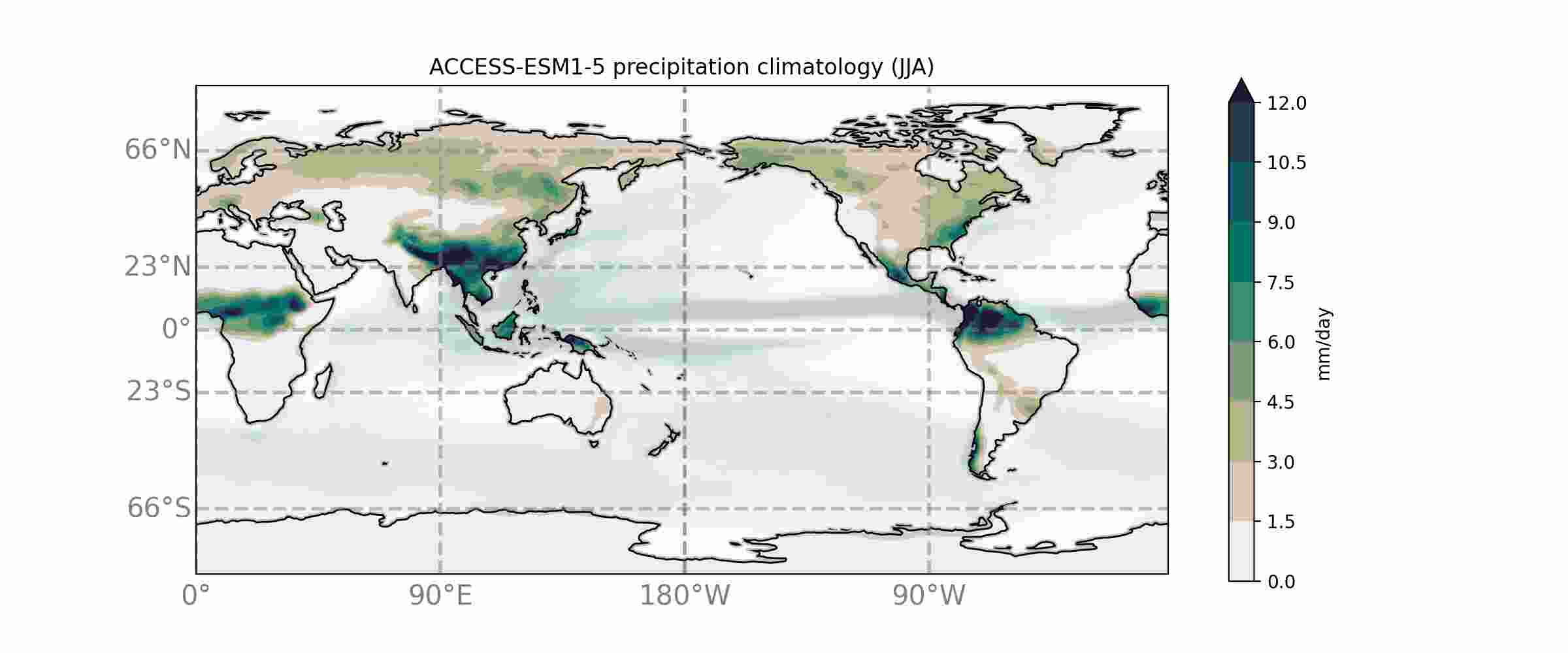Powering up python
Software skills to enhance research code.
2024-04-05
Precursors
Slides and Materials
To access links or follow on your own device these slides can be found at:
https://jackatkinson.net/slides
All materials are available at:
Licensing
Except where otherwise noted, these presentation materials are licensed under the Creative Commons Attribution-NonCommercial 4.0 International (CC BY-NC 4.0) License.
Precursors
- Be nice (Python code of conduct)
- Please ask questions whenever they arise.
- Someone else is probably wondering the same thing.
- I will make mistakes.
- Not all of them will be intentional.
whoami
Research background in fluid mechanics and atmosphere:
- Numerics and fluid mechanics in Engineering,
- Cloud microphysics & volcanic plumes in Geography,
- Radiation belts and satellite data at BAS.
Now a Research Software Engineer (RSE) at the Institute of Computing for Climate Science (ICCS) working with various groups and projects.
I have a particular interest in climate model design and parameterisation.
This talk can be summarised as “things I wish I’d known sooner.”



What is Research Software?
Major Computational Programs


Data processing

Experiment support



Bathymetry by NOAA under public domain
CTD Bottles by WHOI under public domain
Keeling Curve by Scripps under public domain
Climate simulation by Los Alamos National Laboratory under CC BY-NC-ND
Dawn HPC by Joe Bishop with permission
Why does this matter?

Why does this matter?
More widely than publishing papers, code is used in control and decision making:
- Weather forecasting
- Climate policy
- Disease modelling (e.g. Covid)
- Satellites and spacecraft1
- Medical Equipment
Your code (or its derivatives) may well move from research to operational one day.

Margaret Hamilton and the Apollo XI by NASA under public domain
Why does this matter?1
def calc_p(n,t):
return n*1.380649e-23*t
data = np.genfromtxt("mydata.csv")
p = calc_p(data[0,:],data[1,:]+273.15)
print(np.sum(p)/len(p))What does this code do?
# Boltzmann Constant and 0 Kelvin
Kb = 1.380649e-23
T0 = 273.15
def calc_pres(n, t):
"""
Calculate pressure using ideal gas law p = nkT
Parameters:
n : array of number densities of molecules [N m-3]
t : array of temperatures in [K]
Returns:
array of pressures [Pa]
"""
return n * Kb * t
# Read in data from file and convert T from [oC] to [K]
data = np.genfromtxt("mydata.csv")
n = data[0, :]
temp = data[1, :] + T0
# Calculate pressure, average, and print
pres = calc_pres(n, temp)
pres_av = np.sum(pres) / len(pres)
print(pres_av)Virtual Environments
Virtual Environments
What?
- A self-contained python environment
- Packages installed in a local folder
- Advised to use on a per-project basis
Why?
- Avoid system pollution
- Allow different versions
- Reproducibility - set versions
For more information see the Real Python article on environments.
For those using conda it also has environments, set up in a slightly different way.
Also consider uv.
Exercise 1
Scenario: you have just finished some simulations with a climate model that should improve precipitation modelling and have the output data as a netCDF file.
You know that your colleague has produced relevant figures and analysis before, so you ask them for a copy of their code (yay, reuse :+1:).

Exercise 1
Go to exercise 1 (exercises/01_base_code/) and:
- Examine the code in
precipitation_climatology.py - Set up a virtual environment
- Install the necessary dependencies
- Hint: There is a
requirements.txtfile in the root of the repo.
- Hint: There is a
- Run the code
- does it do what you thought it would?
Code Formatting (PEP8)
Python PEPs
- Technical documentation for the python community
- Guidelines, standards, and best-practice
Relevant to us today are:
- PEP8 - Python Style Guide (Rossum, Warsaw, and Coghlan 2001, 2013)
- PEP257 - Docstring Conventions (Goodger and Rossum 2001)
- PEP621 - Packaging (Cannon et al. 2020)
PEP8 & Formatting
By ensuring code aligns with PEP8 we:
- standardise style,
- conform to best-practices, and
- improve code readability to
- make code easier to share, and
- reduce misinterpretation.
“Readability counts”
- Tim Peters in the Zen of Python
“But I don’t have time to read and memorise all of this…”
PEP8 & Formatting - Black

Black (Langa 2020) - black.readthedocs.io
- a PEP 8 compliant formatter
- Strict subset of PEP8
- “Opinionated so you don’t have to be.”
- For full details see Black style
- Try online
PEP8 & Formatting - Black - Example
def long_func(x, param_one, param_two=[], param_three=24, param_four=None,
param_five="Empty Report", param_six=123456):
val = 12*16 +(24) -10*param_one + param_six
if x > 5:
print("x is greater than 5")
else:
print("x is less than or equal to 5")
if param_four:
print(param_five)
print('You have called long_func.')
print("This function has several params.")
param_2.append(x*val)
return param_2def long_func(
x,
param_one,
param_two=[],
param_three=24,
param_four=None,
param_five="Empty Report",
param_six=123456,
):
val = 12 * 16 + (24) - 10 * param_one + param_six
if x > 5:
print("x is greater than 5")
else:
print("x is less than or equal to 5")
if param_four:
print(param_five)
print("You have called long_func.")
print("This function has several params.")
param_2.append(x * val)
return param_2PEP8 & Formatting - Black
- I suggest incorporating into your projects now
- Well-suited to incorporation into continuous integration or git hooks.
- “write and run”
- Gradually you’ll find yourself writing in the black style
- Widely-used standard1
Other notes:
- An extension for jupyter notebooks exists:
pip install "black[jupyter]"
- black rules are configurable if you prefer something slightly different.
- An alternative tool is ruff
Exercise 2
Go to exercise 2 (exercises/02_formatting/) and:
- install black
- run black on
precipitation_climatology.py - examine the output
- Is it more readable?1
- Is there any aspect of the formatting style you find unintuitive?
PEP8 & Formatting - PyLint
Static Analysis
- Check the code without running it
- Catch issues before you run any code
- Improve code quality1
There are various tools available:
- pycodestyle
- flake8
- Pylint
- ruff
PEP8 & Formatting - PyLint - Example
def long_func(
x,
param_one,
param_two=[],
param_three=24,
param_four=None,
param_five="Empty Report",
param_six=123456,
):
val = 12 * 16 + (24) - 10 * param_one + param_six
if x > 5:
print("x is greater than 5")
else:
print("x is less than or equal to 5")
if param_four:
print(param_five)
print("You have called long_func.")
print("This function has several params.")
param_2.append(x * val)
return param_2(myvenv) $ pylint long_func.py
************* Module long_func
long_func.py:1:0: C0116: Missing function or method docstring (missing-function-docstring)
long_func.py:1:0: W0102: Dangerous default value [] as argument (dangerous-default-value)
long_func.py:1:0: R0913: Too many arguments (7/5) (too-many-arguments)
long_func.py:24:4: E0602: Undefined variable 'param_2' (undefined-variable)
long_func.py:25:11: E0602: Undefined variable 'param_2' (undefined-variable)
long_func.py:4:4: W0613: Unused argument 'param_two' (unused-argument)
long_func.py:5:4: W0613: Unused argument 'param_three' (unused-argument)
------------------------------------------------------------------
Your code has been rated at 0.00/10
(myvenv) $PEP8 & Formatting - PyLint - Example
def long_func(
x,
param_one,
param_two=[],
param_four=None,
param_five="Empty Report",
param_six=123456,
):
val = 12 * 16 + (24) - 10 * param_one + param_six
if x > 5:
print("x is greater than 5")
else:
print("x is less than or equal to 5")
if param_four:
print(param_five)
print("You have called long_func.")
print("This function has several params.")
param_two.append(x * val)
return param_two(myvenv) $ pylint long_func.py
************* Module long_func
long_func.py:1:0: C0114: Missing module docstring (missing-module-docstring)
long_func.py:1:0: C0116: Missing function or method docstring (missing-function-docstring)
long_func.py:1:0: W0102: Dangerous default value [] as argument (dangerous-default-value)
long_func.py:1:0: R0913: Too many arguments (6/5) (too-many-arguments)
------------------------------------------------------------------
Your code has been rated at 6.36/10 (previous run: 0.00/10, +6.36)
(myvenv) $
Search the error code to understand the issue:
PEP8 & Formatting - PyLint - IDE Integration
Other notes:
- Well-suited to incorporation into continuous integration or git hooks.
- You can supress warnings in code with:
#pylint: disable=rule-name - project-wide custom configuration is also possible.
- ruff, mentioned before, also does linting1
PEP8 & Formatting - PyLint - IDE Integration
Exercise 3
Go to exercise 3 (exercises/03_linting/) and:
- install pylint
- run pylint on
precipitation_climatology.py - examine the report and try and address some of the issues.
- Ignore missing docstrings and f-strings for now - we’ll come to them later.
- Try and deal with:
W0611Unused imports,C0412Ungrouped imports,W0102Dangerous default - If you feel like it you could try and fix:
W0621Redefining name,W1514Unexplicit open - Unless you are really keen don’t worry about:
R0913Too many arguments,C0103Unconforming naming style.
Exercise 3
Extensions:
- try and add linting to your preferred text editor or IDE
- explore the option to supress pylint warnings
- explore the configuration options for pylint
Comments
Comments are tricky, and very much to taste.
Some thoughts:1
“Programs must be written for people to read and […] machines to execute.”
- Hal Abelson
“A bad comment is worse than no comment at all.”
“A comment is a lie waiting to happen.”
=> Comments have to be maintained, just like the code, and there is no way to check them!

Cat code comment image by 35_equal_W
Comments to avoid
Dead code e.g.
Variable definitions e.g.
Redundant comments e.g.
i += 1 # Increment i
Comments - some thoughts1
- Comments should not duplicate the code.
- Good comments do not excuse unclear code.
- Comments should dispel confusion, not cause it.
- If you can’t write a clear comment, there may be a problem with the code.
- Explain unidiomatic code in comments.
- Provide links to:
- the original source of copied code.
- external references where they will be most helpful.
- Use comments to mark incomplete implementations.
- Comments are not [user] documentation.
- Read by developers, user documentation is for…
Docstrings
These are what make your code reusable (by you and others).
- In python docstrings are designated at the start of ‘things’ using triple quotes:
"""...""". - PEP257 (Goodger and Rossum 2001) tells us what docstrings should say.
Specific conventions tell us how they should say it. - Where comments describe how it works, docstrings describe how to use it.
Unlike comments, docstrings follow a set format.
Various formatting options exist: numpy, Google, reST, etc.
We will use numpydoc it is readable and widely used in scientific code.
Full guidance for numpydoc is available.
Docstrings
Key components:
- A description of what the thing is.
- A description of any inputs (
Parameters). - A description of any outputs (
Returns).
Consider also:
- Extended summary
- Errors raised
- Usage examples
- Key references
Docstrings
Key components:
- A description of what the thing is.
- A description of any inputs (
Parameters). - A description of any outputs (
Returns).
def calculate_gyroradius(mass, v_perp, charge, B, gamma=None):
"""
Calculates the gyroradius of a charged particle in a magnetic field
Parameters
----------
mass : float
The mass of the particle [kg]
v_perp : float
velocity perpendicular to magnetic field [m/s]
charge : float
particle charge [coulombs]
B : float
Magnetic field strength [teslas]
gamma : float, optional
Lorentz factor for relativistic case. default=None for non-relativistic case.
Returns
-------
r_g : float
Gyroradius of particle [m]
Notes
-----
.. [1] Walt, M, "Introduction to Geomagnetically Trapped Radiation,"
Cambridge Atmospheric and Space Science Series, equation (2.4), 2005.
"""
r_g = mass * v_perp / (abs(charge) * B)
if gamma:
r_g = r_g * gamma
return r_gDocstrings - pydocstyle
pydocstyle is a tool we can use to help ensure the quality of our docstrings.1
(myvenv) $ pip install pydocstyle
(myvenv) $ pydocstyle myfile.py
(myvenv) $ pydocstyle mydirectory/
(myvenv) $
(myvenv) $
(myvenv) $ pydocstyle gyroradius.py
gyroradius.py:2 in public function `calculate_gyroradius`:
D202: No blank lines allowed after function docstring (found 1)
gyroradius.py:2 in public function `calculate_gyroradius`:
D400: First line should end with a period (not 'd')
gyroradius.py:2 in public function `calculate_gyroradius`:
D401: First line should be in imperative mood (perhaps 'Calculate', not 'Calculates')
(myvenv) $Note: pydocstyle does not catch missing variables in docstrings. This can be done with Pylint’s docparams and docstyle extensions but is left as an exercise to the reader.
def calculate_gyroradius(mass, v_perp, charge, B, gamma=None):
"""
Calculates the gyroradius of a charged particle in a magnetic field
Parameters
----------
mass : float
The mass of the particle [kg]
v_perp : float
velocity perpendicular to magnetic field [m/s]
charge : float
particle charge [coulombs]
B : float
Magnetic field strength [teslas]
gamma : float, optional
Lorentz factor for relativistic case. default=None for non-relativistic case.
Returns
-------
r_g : float
Gyroradius of particle [m]
Notes
-----
.. [1] Walt, M, "Introduction to Geomagnetically Trapped Radiation,"
Cambridge Atmospheric and Space Science Series, equation (2.4), 2005.
"""
r_g = mass * v_perp / (abs(charge) * B)
if gamma:
r_g = r_g * gamma
return r_gExercise 4
Go to exercise 4 (exercises/04_docstrings_and_comments/) and examine the comments:
- Is there any dead code?
- How is it best to handle it?
- Are comments used sensibly?
- Are any redundant and better off being removed?
- Is there anywhere that would benefit from a comment?
Docstrings:
- Work through the file adding docstrings where they are missing.1
Exercise 4
Extensions:
- Install pydocstlye and use it to check the docstrings you have written.
Writing better (Python) code
f-strings
A better way to format strings since Python 3.6
Not catching on because of self-teaching from old code.
Strings are prepended with an f allowing variables to be used in-place:
name = "electron"
mass = 9.1093837015E-31
# modulo
print("The mass of an %s is %.3e kg." % (name, mass))
# format
print("The mass of an {} is {:.3e} kg.".format(name, mass))
# f-string
print(f"The mass of an {name} is {mass:.3e} kg.")f-strings can take expressions:
See Real Python for more information.
Remove Magic Numbers
Numbers in code that are not immediately obvious.
- Hard to read
- Hard to maintain
- Hard to adapt
Instead:
- Name a variable conveying meaning
- Set to a constant
- Use a comment to explain

numberwang by Mitchell and Webb under fair use
Remove Magic Numbers
"""Module implementing pendulum equations."""
import numpy as np
def get_period(l):
"""..."""
return 2.0 * np.pi * np.sqrt(l / 9.81)
def max_height(l, theta):
"""..."""
return l * np.cos(theta)
def max_speed(l, theta):
"""..."""
return np.sqrt(2.0 * 9.81 * max_height(l, theta))
def energy(m, l, theta):
"""..."""
return m * 9.81 * max_height(l, theta)
def check_small_angle(theta):
"""..."""
if theta <= np.pi / 1800.0:
return True
return False
def bpm(l):
"""..."""
return 60.0 / get_period(l)
"""Module implementing pendulum equations."""
import numpy as np
GRAV = 9.81
def get_period(l):
"""..."""
return 2.0 * np.pi * np.sqrt(l / GRAV)
def max_height(l, theta):
"""..."""
return l * np.cos(theta)
def max_speed(l, theta):
"""..."""
return np.sqrt(2.0 * GRAV * max_height(l, theta))
def energy(m, l, theta):
"""..."""
return m * GRAV * max_height(l, theta)
def check_small_angle(theta, small_ang=np.pi/1800.0):
"""..."""
if theta <= small_ang:
return True
return False
def bpm(l):
"""..."""
# Divide 60 seconds by period [s] for beats per minute
return 60.0 / get_period(l)Put config in a config file
- Ideally we shouldn’t have hop in and out of the code (and recompile in higher level langs) every time we change a runtime setting
- No easy record of runs
Instead:
- It’s easy to read a json file into python as a dictionary Handle as you wish - create a class, read to variables etc.
- Could even make config filename a command line argument
{
"config_name": "June 2022 m01 n19 run",
"start_date": "2022-05-28 00:00:00",
"end_date": "2022-06-12 23:59:59",
"satellites": ["m01", "n19"],
"noise_floor": [3.0, 3.0, 3.0],
"check_SNR": true,
"L_lim": [1.5, 8.0],
"telescopes": [90],
"n_bins": 27
}{'config_name': 'June 2022 m01 n19 run', 'start_date': '2022-05-28 00:00:00', 'end_date': '2022-06-12 23:59:59', 'satellites': ['m01', 'n19'], 'noise_floor': [3.0, 3.0, 3.0], 'check_SNR': True, 'L_lim': [1.5, 8.0], 'telescopes': [90], 'n_bins': 27}Exercise 5
Magic Numbers
- Look through the code and identify any magic numbers.
- Implement what you feel is the best approach in each case
f-strings
- Look for any string handling (currently using the .format() approach) and update it to use f-strings.
- Is the intent clearer?
- Is the layout of the data written to file easier to understand?
Configuration settings
- There is helpfully a list of configurable inputs at the end of the file under
"__main__".
We can improve on this, however, by placing them in a configuration file. - Create an appropriate json file to be read in as a dictionary and passed to the main function.
Other things
Beyond the scope of today are a few other honourable mentions:
- Functions and modules
- Packaging
- Breaking projects into modules and
__init__.py - Distributing projects with
pyproject.toml
- Breaking projects into modules and
- Documentation
- Auto-generation from docstrings with sphinx or mkdocs
- Type hinting
- Adding type hinting to python code - how and why?
- Type checking with mypy
These lessons will be added to the course content in future but are beyond the scope of today.
Honourable Mentions
- ruff
This is a recent tool at allows you to do formatting and linting in one go.
Setup is slightly harder than the soold discussed here however. - pint
This library allows you to store the units as part of a value, and convert between units. This can be useful, especially at in/output, but adds to “overheads”. - mypy
This is a package for type checking - helping to ensure our code behaves as we might expect. Similarities to Fortran/C/C++.
Closing
Where can I get help?
ICCS runs Climate Code Clinics that can be booked by any researcher in climate science or related fields at any time.
Apply online for a 1hr slot where 2 ICCS RSEs will sit down to take a look at your code, answer your questions, and help you improve it.
Recent topics have included:
- Adding documentation to code
- Packaging and distributing code for easy installation
- Opening projects for collaboration and project management
- Structuring ML projects
- Linking machine learning to Fortran
- Adding MPI and OpenMP to code
- …
Where can I learn more?
- References and links in these slides
- Writing Clean Scientific Software Webinar (Murphy 2023)
- Code Refinery - in particular their videos
- Good Enough Practices in Scientific Computing (Wilson et al. 2017)
- Cambridge RSE Seminars
- Weekly presentations in West Cambridge
- rse.group.cam.ac.uk
- RSE/NCAR-HPC/other slack workspaces
Where can I learn more?
Get in touch:
References
The code in this workshop is based on a script from (Irving 2019).

Comments and Docstrings